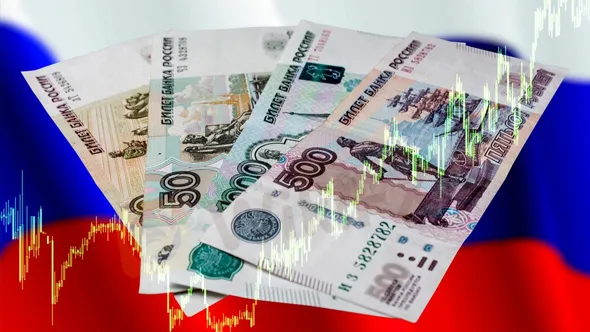简体中文
繁體中文
English
Pусский
日本語
ภาษาไทย
Tiếng Việt
Bahasa Indonesia
Español
हिन्दी
Filippiiniläinen
Français
Deutsch
Português
Türkçe
한국어
العربية
Russia Central Bank Cuts Key Rate for Third Time on Stronger Ruble
Abstract:The Bank of Russia Thursday lowered its key interest rate to 11% from 14%.

Russia's central bank cut its key interest rate for a third time since early April as it sought to steady a strengthening ruble and support a faltering economy.
The Bank of Russia Thursday lowered its key interest rate to 11% from 14%. Following two rate cuts in April, that largely reverses a doubling of the key rate in the immediate aftermath ofRussia's invasion ofUkraineand the Western sanctions that it provoked.
The initial hike to 20% from 9.5% in late February was intended to support a rapidly weakening ruble and limit a surge in inflation as imports became more expensive. But the ruble has since regained lost ground and made some gains asRussia's foreign currency revenues from exports of oil and gas have surged thanks to higher prices.
“Inflationary pressure eases on the back of the ruble exchange rate dynamics as well as the noticeable decline in inflation expectations of households and businesses,” the central bank said in a statement.
But while the currency and the country's financial system have stabilized, the outlook for the economy is gloomy, with Western sanctions limiting the country's ability to import needed goods, services, parts and equipment. The United Nations last week said it expectsRussia's economy to contract by 10.6% this year.
“External conditions for the Russian economy are still challenging, considerably constraining economic activity,” the Bank of Russia said. For more Forex news, please download WikiFX- the Global Broker Regulatory Inquiry APP.
Disclaimer:
The views in this article only represent the author's personal views, and do not constitute investment advice on this platform. This platform does not guarantee the accuracy, completeness and timeliness of the information in the article, and will not be liable for any loss caused by the use of or reliance on the information in the article.
Read more

US Federal Reserve May Cut Interest Rates in September, Says Goldman Sachs
US Federal Reserve Chair Jerome Powell may slash the policy rate in September 2025, according to research economists at Goldman Sachs. Read this to learn more.

Forex Interbank Rate & How It Influences Your Trading
A forex interbank rate is nothing but the wholesale currency exchange rate that banks and other major financial institutions use to trade currencies among themselves. Read more about it.

US Jobs Data Out: Boom in Government Sector, Not So in Private Sector
Jobs grew unexpectedly in June 2025 as per the data released from the US Labor Department. However, the government sector contributed more than half to the non-farm payroll. Read this to find out why private sector struggles to add jobs in the US.

BaFin Halts USDe Token Issuance, Citing Serious Compliance Failures
The German regulator BaFin has frozen USDe token issuance amid compliance issues. What led to this drastic move, and how does it impact the market?
WikiFX Broker
Latest News
Join WikiFX’s Agent Growth Event | Turn Your Success into a Global Achievement
Forex Trends Explained for Your Successful Trading Experience
Do Kwon Faces 130-Year Prison Sentence After Guilty Plea in $40B Crypto Collapse
Best 5 Low-Spread FX Brokers in India 2025
Major Pairs in Forex: Top Traded Currency Insights
What is ECN in Trading? A Simple Guide
SEC Settles California Trader with Over $234,000 Spoofing Scheme
What Is Forex Trading Fee? A Beginner’s Guide
Understanding UAE’s Financial Market Regulation: SCA and DFSA
Scam Alert: Know the Risky Side of InstaForex in India
Currency Calculator


